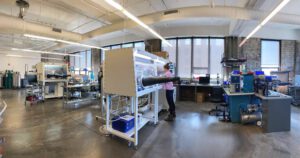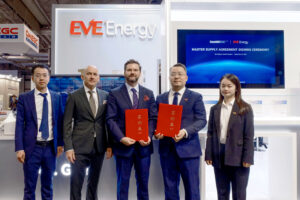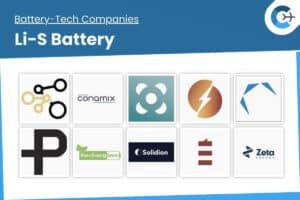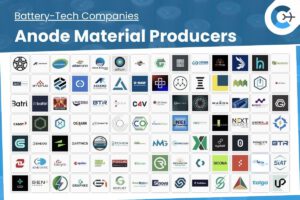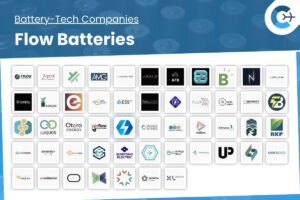Key Players in Battery Recycling

Primobius
Primobius GmbH provides sustainable lithium-ion battery recycling in Germany. Utilizing a dual-phase mechanical and hydrometallurgical process, they efficiently recover high-purity materials like cobalt, lithium, and nickel, supporting the circular economy for electric vehicles, energy storage, and electronics.
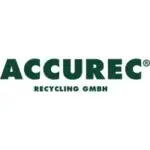
ACCUREC-Recycling GmbH
Accurec Recycling GmbH, founded in 1995 in Germany, specializes in sustainable battery recycling for Li-ion and nickel-based batteries. Operating facilities in Krefeld and Mülheim, Accurec employs innovative technologies like HydroLiC to recover valuable materials, supporting a circular economy and advancing e-mobility.

ACE Green Recycling Inc.
ACE Green Recycling Inc., headquartered in Houston, leads sustainable recycling of lithium-ion and lead-acid batteries for automotive, energy storage, and electronics. Using proprietary LithiumFirst™ and Greenlead™ technologies with zero Scope 1 emissions, the company operates globally and plans to list on NASDAQ in 2025.
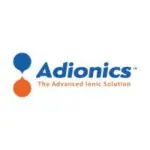
Adionics
Adionics, founded in 2012 in France, specializes in sustainable Direct Lithium Extraction (DLE) and advanced battery technologies. Using its proprietary Flionex® system, Adionics efficiently extracts high-purity lithium for electric vehicles and renewable energy, minimizing environmental impact and supporting a sustainable energy future globally.

AE Elemental
AE Elemental, a joint venture between Ascend Elements and Elemental Strategic Metals, specializes in sustainable lithium-ion battery recycling for the EV industry. Utilizing advanced Hydro-to-Cathode® technology, their facilities in Poland and Germany achieve 99% material recovery, promoting a circular economy and environmental sustainability.

Aepnus Technology
Aepnus Technology Inc. develops advanced electrolyzers that convert renewable electricity into essential industrial chemicals. Based in Oakland with offices in Montréal and Stuttgart, the company’s innovative technology achieves 50% higher energy efficiency in chemical production, particularly serving the battery manufacturing industry.

AkkuSer
Established in 2005 in Nivala, Finland, AkkuSer Oy specializes in sustainable battery recycling with its proprietary Dry-Technology. Processing diverse battery types without water or chemicals, they convert over 50% of materials into reusable resources, serving domestic and European markets.

Aleon Renewable Metals
Aleon Renewable Metals, founded in 2022 in Freeport, Texas, pioneers lithium-ion battery recycling. Utilizing hydrometallurgical and pyrometallurgical processes and ALD coatings, ARM recovers metals to support sustainable energy solutions.

Alpha House Ltd
Alpha House Ltd, established in 2014 in the UK, delivers advanced battery energy storage solutions for sectors like data centers, telecommunications, and renewable energy. Offering a diverse range of battery technologies and expert consultancy, the company emphasizes sustainability through innovative recycling programs and cutting-edge recyclable lithium-ion batteries.

Altilium Clean Technology
Altilium Clean Technology, based in Plymouth, UK, specializes in recycling end-of-life EV batteries into high-quality materials using its proprietary EcoCathode™ process. Achieving high recovery rates and reducing carbon emissions, Altilium supports sustainable, circular supply chains in the UK’s electric vehicle sector.
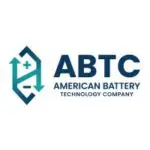
American Battery Technology Company
American Battery Technology Company (ABTC), founded in 2011 in Nevada, specializes in sustainable battery material production and recycling. Using proprietary hydrometallurgical processes, ABTC recovers critical metals from lithium-ion batteries, supporting electric vehicles and energy storage. Recognized by the U.S. Department of Energy, ABTC advances eco-friendly practices in the domestic battery supply chain.

ANDRITZ AG
ANDRITZ AG is a global engineering partner providing advanced solutions for battery manufacturing and recycling, covering the entire value chain from cell production to end-of-life processes. Their high-speed, modular, and fully automated equipment supports safe, efficient, and scalable battery production for lithium-ion and other chemistries.
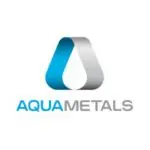
Aqua Metals Inc.
Aqua Metals, Inc. (NASDAQ: AQMS) is a Nevada-based leader in sustainable battery recycling. Utilizing its patented AquaRefining™ technology, the company efficiently recovers high-purity metals from lithium-ion batteries, supporting the electric vehicle and renewable energy sectors while minimizing environmental impact.

Arkenlight Limited
Arkenlight Limited, a UK-based spin-off from the University of Bristol’s ASPIRE group, develops diamond-based radiovoltaic batteries harnessing radioactive decay. Led by Professors Fox and Scott, their sustainable, long-lasting power solutions target industrial IoT, medical devices, and space applications.

Ascend Elements
Ascend Elements, headquartered in Westborough, MA, is a climate tech leader transforming the lithium-ion battery supply chain with its Hydro-to-Cathode® and Hydro-to-Anode™ technologies. Specializing in sustainable manufacturing and advanced recycling, the company produces high-performance materials for EV batteries, reducing waste and carbon emissions.

Attero
Attero is a deep-technology company dedicated to sustainable recycling, recovering valuable green metals from e-waste and lithium-ion batteries. Its proprietary closed-loop process achieves over 98% efficiency, driving a circular economy.

Aurubis
Aurubis AG, headquartered in Hamburg, leads global non-ferrous metal production and recycling. With over 150 years of expertise, it specializes in high-purity metals and innovative battery recycling technologies. Committed to sustainability, Aurubis drives the circular economy in e-mobility and renewable energy sectors.

Austin Elements Inc.
Austin Elements Inc., based in Houston, specializes in sustainable lithium-ion battery recycling and the production of high-purity critical minerals. Utilizing proprietary low-carbon technologies, they produce lithium carbonate, nickel sulfate, and more for electric vehicles and energy storage, supporting a circular battery economy.

Back to Battery
Back to Battery, based at the Netherlands’ Brightlands Chemelot Campus, pioneers sustainable lithium-ion battery recycling. Utilizing advanced, eco-friendly technologies, they recover critical materials like lithium, nickel, and cobalt, supporting a circular economy and the EV and renewable energy sectors.
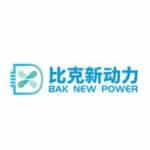
Bak New Power
BAK New Power, founded in 2019 and based in China, leads the lithium battery industry with advanced energy storage solutions for electric vehicles, residential, and industrial applications. Leveraging welding-free assembly and intelligent management systems, the company emphasizes safety, efficiency, and sustainability to drive renewable energy and transportation electrification globally.

BASF
BASF Corporation, headquartered in Germany, is a global chemical leader with over 200 production sites. Serving industries like automotive, electronics, and agriculture, it specializes in high-performance battery materials for electric mobility. Committed to sustainability, BASF promotes circular economy solutions and invests in innovative technologies.
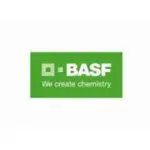
BASF Canada Inc
BASF Canada Inc., a Mississauga-based subsidiary of BASF SE with over 1,200 employees, operates across six business segments. It advances sustainable battery technologies for electric vehicles by developing cathode active materials and pioneering battery recycling initiatives.

BASF Shanshan Battery Materials Co. Ltd
BASF Shanshan Battery Materials Co., Ltd., founded in 2021, is a joint venture between BASF and Shanshan based in China. Specializing in high-performance cathode active materials for lithium-ion batteries, it serves the electric vehicle and consumer electronics markets with sustainable and innovative production technologies.

BATREC Industrie AG
BATREC Industrie AG, a Swiss subsidiary of Veolia Group, specializes in recycling hazardous industrial waste, including various battery types. Using advanced thermal processes and high-purity mercury recovery, BATREC ensures sustainable resource management aligned with strict environmental standards, positioning it as a leader in battery recycling globally.
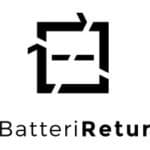
Batteriretur
Batteriretur, founded in 1995 in Fredrikstad, Norway, leads in battery collection, recycling, and second-life applications. Utilizing advanced technologies, the company maximizes material recovery and repurposes batteries for energy storage, supporting Norway’s circular economy through strategic European partnerships.

Battery Damage Service
Battery Damage Service GmbH, based in Braunschweig, Germany, delivers full-cycle solutions for industrial lithium-ion battery waste. Their rapid response and secure dismantling ensure compliance with environmental standards.

Battri
Battri, founded in 2022 in France, specializes in recycling lithium-ion batteries across Europe. With a 97% efficiency facility, they recover key materials like lithium and cobalt, supporting the circular economy through end-to-end solutions and advanced technology.

Betteries AMPS GmbH
Berlin-based Betteries AMPS GmbH upcycles second-life EV batteries into modular, connected power systems like SUNRISE kits. Their sustainable solutions reduce e-waste and carbon footprint, supporting renewable energy storage, e-mobility, and off-grid applications through innovative, scalable battery technology.

Bib batteries
Bib Batteries, founded in Paris in 2021, specializes in sustainable EV battery management throughout their lifecycle. Leveraging an AI-powered platform, they provide real-time monitoring, repair, reuse, and recycling solutions for EV fleets, enhancing performance and reducing environmental impact.

BlackMass Energies
Black Mass Energies specializes in sustainable lithium-ion battery recycling. Using advanced urban mining approaches, they recover critical metals like lithium, cobalt, and nickel from end-of-life EV batteries, promoting circular economy practices.
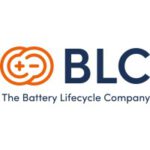
BLC – The Battery Lifecycle Company
The Battery Lifecycle Company (BLC), founded in 2023 by Rhenus and TSR Automotive, specializes in recycling and repurposing automotive lithium-ion batteries. Based in Germany, BLC uses advanced automated systems to provide comprehensive solutions from inspection and discharging to dismantling and recycling, promoting sustainable battery management.

Blue Whale Materials LLC
Blue Whale Materials LLC, founded in 2015 in Washington, DC, specializes in sustainable lithium-ion battery recycling. Using proprietary technology, they produce Blacksand™ by recovering up to 98% of critical minerals like cobalt, nickel, and lithium, supporting electric vehicles and energy storage solutions.

Botree Recycling Technologies
Botree Recycling Technologies, based in Chengdu, China, specializes in hydrometallurgical recycling for EV and energy storage batteries. Their advanced separation systems efficiently recover critical metals, supporting closed-loop cycles and sustainability. Botree’s innovations reduce carbon emissions and advance the circular economy.

CellCircle
Established in 2022 in Würzburg, Germany, CellCircle specializes in innovative lithium-ion battery recycling. Spun off from Fraunhofer ISC, their efficient process regenerates high-purity materials for direct reuse in new battery production, promoting sustainable practices and reducing raw material dependency in Europe.

Cellcycle
Cellcycle, the UK’s leading carbon-neutral battery recycler, utilizes advanced direct and bio-based methods to recover critical metals from spent lithium-ion batteries while driving sustainable circular economy practices.

CellMine
CellMine, a cleantech company in Livingston, Scotland, pioneers advanced lithium-ion battery recycling. Using a novel, green chemical process to rejuvenate cathode materials, they offer sustainable solutions for critical materials recovery.

Cirba Solutions
Cirba Solutions is North America’s leading battery recycling and management company, offering sustainable end-of-life solutions for lithium-ion batteries. Using advanced hydrometallurgical technology, they recover critical materials to support circular supply chains for electric vehicles, electronics, and energy storage systems.

Circu Li-ion
Circu Li-ion, founded in 2021 in Luxembourg, revolutionizes battery recycling with automated upcycling solutions that extend battery life cycles. Specializing in dismantling, disassembling, and diagnosing battery packs, the company serves sectors like EVs, micromobility, and energy storage, partnering with OEMs and recyclers across Europe.

Circunomics
Circunomics GmbH, based in Mainz, Germany, specializes in lithium-ion battery lifecycle management via a B2B marketplace. Leveraging AI and digital twin technology, they optimize battery reuse and recycling for electric mobility. In 2023, they managed over 200 MWh in trades and secured €8 M in Series A funding for international expansion.

COBCO S. A.
COBCO S.A. is a prominent leader in battery materials, supplying essential components for EVs and energy storage. Headquartered in Morocco, the joint venture with Al Mada and CNGR drives innovations in sustainable refining, production, and recycling.

Connected Energy
Connected Energy, based in Newcastle UK, repurposes second-life EV batteries into scalable energy storage systems using proprietary E-STOR technology. Their solutions enable peak shaving, load shifting, and renewable energy optimization for commercial and industrial applications.

Cwenga Lib
Cwenga Lib is a Johannesburg-based technology company specializing in lithium-ion battery recycling. Using a patented hydrometallurgical process, it detoxifies spent batteries and recovers essential metals to support a sustainable circular economy.

cylib
Cylib, a German startup founded in 2022, specializes in sustainable lithium-ion battery recycling for electric vehicles. Utilizing proprietary technology with over 90% efficiency, Cylib recovers key materials like lithium and cobalt. Their Dormagen facility, set to operate by 2026, will process 30,000 tonnes annually, supporting a closed-loop supply chain.

Dainen Materials Co. Ltd.
Japanese innovator Dainen Materials Co., Ltd. manufactures high-performance natural graphite anodes and sustainable recycling solutions for lithium-ion batteries, advancing EV and energy storage technology.

Duesenfeld
Duesenfeld, based in Wendeburg, Germany, pioneers sustainable lithium-ion battery recycling with a patented low-temperature process. Achieving 91% material recovery and significant CO₂ reductions, their technology supports electric mobility and the circular economy.

Ecobat
Ecobat, based in Dallas, is a global leader in battery resource management with 27 operations across Europe and the USA. Specializing in the collection, recycling, and production of lead-acid and lithium-ion battery materials, Ecobat processes over 120 million used batteries annually, supporting sustainable energy storage solutions.

EcoNiLi Battery Group
Founded in 2021 and based in Malaysia, EcoNiLi Battery Group specializes in lithium-ion battery and solar panel recycling. Operating four facilities across Malaysia, Indonesia, and Spain, they process 86,000 metric tons annually using hydrometallurgical technology to recover valuable metals. Their solar-powered operations reduce carbon emissions by 45%, promoting sustainability in the circular economy.
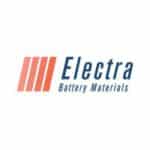
Electra Battery Materials Corporation
Electra Battery Materials Corporation (ELBM) specializes in producing and recycling essential EV battery materials in North America. Utilizing advanced hydrometallurgical and recycling technologies, Electra ensures a sustainable domestic supply chain for electric vehicle manufacturers.

Eramet
Eramet is a global French mining and metallurgy company specializing in critical metals like lithium, nickel, and cobalt essential for energy transition and battery technologies. Leveraging advanced extraction and closed-loop recycling processes, Eramet operates sustainably across multiple continents, driving innovation in clean energy materials.

Erlos Produktion und Montagen GmbH
Erlos Produktion und Montagen GmbH, a WP Holding subsidiary in Zwickau, Germany, specializes in lithium-ion battery recycling and energy storage solutions. Utilizing advanced thermomechanical processes, Erlos recovers over 98% of valuable metals and repurposes second-life EV batteries into scalable, certified energy storage systems, partnering with major automakers like Mercedes-Benz AG.

Exigo Recycling
Exigo Recycling, based in Gurugram, India, drives sustainable e-waste and battery recycling solutions. Through advanced mechanical and hydrometallurgical processes, it converts discarded electronics into valuable raw materials for diverse industrial applications.

Fenix Battery Recycling Ltd
Fenix Battery Recycling Ltd, based in Willenhall, UK, pioneered the nation’s first multi-chemistry battery recycling facility. Specializing in lithium-ion and alkaline batteries, Fenix utilized advanced technologies for sustainable material recovery, supporting the circular economy and reducing reliance on international recycling services.

Fivrec
Fivrec, based in Kaunas, Lithuania, leads sustainable lithium-ion battery recycling using innovative mechanical and hydrometallurgical processes. Their technology efficiently recovers essential metals, supporting clean energy.

Fortum Battery Recycling
Fortum Battery Recycling, a European leader in sustainable battery recycling, uses advanced hydrometallurgical technology to recover over 95% of valuable metals from EV batteries. Operating Finland’s largest closed-loop facility, they provide high-purity materials for new battery production, supporting the circular economy.

Full Circle Lithium
Full Circle Lithium, based in Toronto, specializes in lithium-ion battery safety and sustainable solutions. Their flagship FCL-X™ effectively extinguishes battery fires across various sectors. With over a century of combined expertise, they also operate a lithium processing facility and advance battery recycling technologies.

Gaea
Gaea Technology Ltd, based in the UK, creates specialized software for the advanced battery recycling industry. Their data-driven platforms integrate with ERP systems to optimize operations, ensure compliance, and boost profitability. Using QR code tracking and real-time inventory management, Gaea transforms recycling into efficient, transparent processes, supporting sustainable battery recycling efforts.

Glencore
Glencore, a Swiss multinational since 1974, is a leading commodity trader and mining company operating in over 35 countries. Specializing in essential battery materials and recycling solutions, Glencore supports electric vehicles and renewable energy. Committed to sustainability, it aims for net-zero carbon emissions by 2050.

Green Li-ion
Green Li-ion, based in Singapore and founded in 2020, pioneers lithium-ion battery recycling with its proprietary GREEN HYDROREJUVENATION™ technology. The company transforms spent batteries into high-quality cathode and anode materials, addressing e-waste challenges and supporting sustainable energy solutions globally.
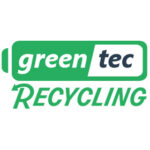
Greentec Recycling
Greentec Recycling advances sustainable battery management by recycling, repairing, and reusing hybrid, electric, and industrial lithium batteries. With 28 drop-off sites and expansion into Vancouver, it ensures regulatory compliance.

H.C. Starck Tungsten Powders
H.C. Starck Tungsten Powders, a subsidiary of Mitsubishi Materials Corporation, leads in tungsten-based material innovation. It designs high-performance powders and compounds for automotive, aerospace, medical, and battery applications.
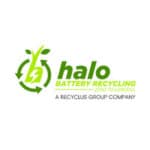
Halo Battery Recycling Ltd
UK-based Halo Battery Recycling Ltd, part of the Recyclus Group, leverages advanced hydrometallurgical methods to recycle lead-acid batteries. The company transforms spent batteries into valuable materials, fueling a circular economy.

Hydrovolt
Hydrovolt AS, based in Fredrikstad, Norway, is a leading European battery recycling company founded in 2020. Utilizing advanced technologies, Hydrovolt transforms end-of-life EV and industrial batteries with a 75% lower carbon footprint, recovering up to 95% of materials for sustainable reuse in new battery production.

Infiniti Recycling
Cambridge-based Infiniti Recycling Ltd revolutionizes EV battery recycling with its direct lithium-ion process, achieving 100% material recovery. Committed to sustainability, it also produces high-quality carbon black from recycled materials, fostering a closed-loop supply chain for battery manufacturing.

KYBURZ Switzerland AG
KYBURZ Switzerland AG, founded in 1991, leads in specialized electric vehicles for urban logistics, postal, and industrial transport. Its innovative LFP battery and recycling systems enable sustainable, cost-efficient performance worldwide.

Li Industries
Li Industries, founded in 2017 in Pineville, NC, specializes in lithium-ion battery recycling using its advanced Direct E2E technology. They efficiently recover high-quality materials for electric vehicles and energy storage, supported by strategic partnerships and strong investor backing.
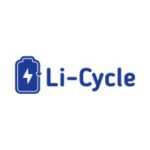
Li-Cycle
Li-Cycle Holdings Corp., headquartered in Toronto, is a global leader in lithium-ion battery recycling. Using its patented Spoke & Hub Technologies, the company recovers up to 95% of critical materials from spent batteries, providing sustainable resources to electric vehicle manufacturers and battery producers worldwide.

Li-Generate
Li-Generate is an innovative technology company revolutionizing lithium-ion battery recycling with its room-temperature metal extraction process. This scalable, sustainable method efficiently recovers pure metals and reduces environmental impact.
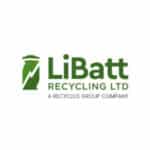
LiBatt Recycling Ltd
LiBatt Recycling Ltd, based in Wolverhampton and part of the Recyclus Group since 2021, is the UK’s first industrial-scale lithium-ion battery recycler. Utilizing advanced hydrometallurgical processes, they recover key materials from diverse batteries, including innovative solutions for lithium thionyl chloride types, fostering sustainability and the transition to a net-zero economy.

Libattion
Libattion, based in Switzerland, specializes in sustainable energy storage by repurposing EV batteries with over 80% capacity into certified BESS e-Rack and e-Container systems. Serving sectors like agriculture and manufacturing, their advanced technology ensures efficient energy management.

LIBREC
LIBREC AG, based in Biberist, Switzerland, specializes in closed-loop lithium-ion battery recycling for EVs. Utilizing an innovative, energy-efficient process, LIBREC recovers over 90% of critical materials, supporting sustainable e-mobility by providing high-quality recycled components for new battery production.

Lithion Technologies
Lithion Technologies, founded in Montreal in 2018, specializes in sustainable lithium-ion battery recycling. Utilizing advanced hydrometallurgical processes, they achieve 95% material recovery, supporting the global energy transition and reducing environmental impact.

Livista Energy Europe S.A.
Livista Energy Europe S.A. is building Europe’s largest sustainable lithium refining operations to support electric mobility. Specializing in high-purity battery-grade lithium from primary and recycled sources, they aim to supply materials for 1.5 million electric vehicles annually, promoting local and sustainable supply chains.

Neometals Ltd
Neometals Ltd (ASX: NMT) is an Australian company developing sustainable recycling technologies for critical materials. Specializing in lithium-ion battery and vanadium recovery, it employs proprietary mechanical and hydrometallurgical processes to support a circular economy through strategic partnerships.

NEU Battery Materials
NEU Battery Materials, founded in Singapore in 2021, specializes in sustainable electrochemical recycling of lithium iron phosphate (LFP) batteries. Using patented redox-targeting technology, they achieve near-zero waste and high recovery rates, supporting the electric vehicle and energy storage industries.

Novocycle Technologies
Novocycle Technologies, founded in 2021 and based in Sunnyvale, CA and Türkiye, specializes in sustainable lithium-ion battery recycling. Their proprietary NovoRec process achieves over 96% efficiency and 99% material purity, supporting a circular economy through advanced material recovery and reuse solutions.

Nyrstar
Nyrstar is a global leader in zinc and lead production, committed to sustainable mining and responsible metal processing. Headquartered in the Netherlands, the company advances battery technology through energy storage and recycling solutions, supporting industries from construction to electronics.

OnTo Technology LLC
OnTo Technology LLC, a woman-owned enterprise in Bend, Oregon, advances lithium-ion battery recycling with innovative methods such as Direct Recycling and Cathode Healing™. Their solutions enhance safety, efficiency, and sustainability.

Princeton NuEnergy
Princeton NuEnergy, founded in 2019 as a Princeton University spin-off, specializes in lithium-ion battery recycling using its proprietary Low-temperature Plasma-assisted Separation (LPASTM) technology. Achieving a 95% material recovery rate and reducing CO₂ emissions by 69%, PNE supports sustainable electric vehicle and energy storage industries.

RE.LION.BAT. Circular GmbH
RE.LION.BAT. Circular GmbH, a collaboration between LUEG and DEPPE Group in Meppen, Germany, specializes in lithium-ion battery recycling. Their advanced facility processes up to 60,000 tons annually with 96% material recovery, supporting sustainable practices in automotive and electronics industries.

Reckelberg Environmental Technologies GmbH
Reckelberg Environmental Technologies GmbH (RET) is a German leader in lithium-ion battery recycling and material recovery. Utilizing advanced technologies like the Impact Reactor, RET ensures high recovery rates of valuable materials while adhering to EU environmental standards. Through strategic partnerships, RET supports sustainable practices amid growing electric vehicle adoption.

RecycLiCo Battery Materials
RecycLiCo Battery Materials, based in Surrey, Canada, leads sustainable lithium-ion battery recycling with patented hydrometallurgical processes that recover up to 99% of cathode metals. Their mobile, modular plants enable on-site processing globally, supporting the electric vehicle and renewable energy sectors.

Recyclus Group
Recyclus Group is the UK’s first industrial-scale lithium-ion battery recycler, using in-house technology to recover critical metals. Based in Wolverhampton, the company fuels a sustainable circular battery economy.
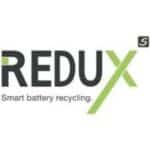
REDUX Recycling GmbH
Redux Recycling GmbH, based in Bremerhaven, Germany, specializes in sustainable lithium-ion battery recycling. Acquired by Redwood Materials in 2023, the company utilizes advanced sorting and recovery technologies to extract critical metals, promoting a circular economy and enhancing resource efficiency.

Redwood Materials
Redwood Materials, founded in 2017 by J.B. Straubel, specializes in lithium-ion battery recycling and sustainable material production. Using advanced hydrometallurgical processes, they achieve a 95% recovery rate for critical elements, enabling a circular supply chain for electric vehicle batteries.

REELEMENTS
REELEMENTS, based in Germany, specializes in sustainable lithium-ion battery recycling for electric vehicles and industrial storage. Using its patented high-voltage EHZ process, the company achieves 95% material recovery with 98% purity, enabling a closed-loop system that supports eco-friendly battery manufacturing within Europe.

Regenerate Technology
Regenerate Technology is a global leader in battery material processing and recycling, specializing in lead-acid and lithium-ion batteries. Utilizing proprietary technologies and strategic facilities worldwide, the company transforms end-of-life batteries into valuable resources while minimizing environmental impact.

Renewance Inc
Founded in 2016 in Chicago, Renewance Inc. specializes in industrial battery life cycle management. Their Renewance Connect™ platform delivers comprehensive monitoring and optimization for energy storage and electric vehicle sectors. Committed to sustainability, they provide software and consulting services for safe, eco-friendly battery operations.

Revex Technologies
Revex Technologies, headquartered in Houghton, Michigan, specializes in sustainable nickel processing essential for the clean energy transition. Their integrated approach—from extraction to recycling—reduces costs and greenhouse gas emissions by 40%, enabling the domestic production of nickel for electric vehicle batteries.

revomet – CRONIMET company
Revomet, a CRONIMET Holding subsidiary in Bitterfeld, Germany, specializes in advanced lithium-ion battery recycling. Led by Dr. Costa and Oliver Kleinhempel, they transform used EV batteries into valuable raw materials, promoting a circular economy through innovative recycling technologies.
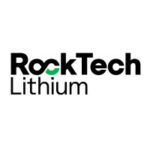
Rock Tech Lithium
Rock Tech Lithium Inc. is a leading producer of sustainable lithium hydroxide for electric vehicle batteries. Operating in Canada and Germany, the company integrates mining, refining, and recycling to ensure a localized and eco-friendly lithium supply chain, targeting 24,000 tonnes of battery-grade lithium hydroxide annually.

Rocklink
Rocklink GmbH in Düsseldorf specializes in recycling rare metals from lithium-ion batteries and rare earth magnets. With divisions in Fine Metals & Chemicals and Rare Metals Recycling, they use advanced thermal and hydrometallurgical processes to recover lithium, nickel, cobalt, and manganese, promoting sustainable electromobility and renewable energy.

Royal Bees Recycling
Royal Bees Recycling, founded in 2013 in Legnica, Poland, specializes in lithium-ion battery recycling. Using advanced technology, they recover valuable materials like lithium, nickel, cobalt, copper, and aluminum, supporting the circular economy and minimizing environmental impact in the European market.

SERI Industrial Spa
SERI Industrial S.p.A., founded in 1999 in Italy, excels in advanced lithium-ion and lead-acid battery production, recycling, and energy storage solutions, integrating circular economy principles for sustainable industrial applications.

SERMA Technologies
SERMA Technologies, a French expert in electronic and battery analysis, provides consulting, testing, and simulation services that support R&D and manufacturing. Serving aerospace, automotive, and energy sectors, it drives innovation in electrification.

SK tes
SK tes is a global leader in technology lifecycle services, excelling in secure IT asset management and advanced battery recycling processes. Its proprietary solutions streamline ITAD and promote circular economy practices across 40+ facilities.

SNAM Société Nouvelle d’Affinage des Métaux
Founded in 1977, SNAM is a leading French battery recycling company in Europe. Specializing in Ni-Cd, NiMH, Li-ion, and alkaline batteries, SNAM utilizes advanced mechanical, pyrometallurgical, and hydrometallurgical processes to efficiently recover valuable metals. Through its Phoenix project, the company produces batteries using up to 80% recycled materials, promoting sustainability and the circular economy. Partnering with major automakers, SNAM enhances battery lifecycle management and supports effective waste reduction.

Stena Recycling AB
Stena Recycling AB, based in Sweden, leads sustainable industrial solutions by advancing recycling technology for lithium-ion batteries and diverse materials. Focused on circular economy practices, it enhances resource efficiency.

SungEel HiTech
SungEel HiTech, founded in 2000 in Gunsan, South Korea, is a global leader in lithium-ion battery recycling. Using advanced hydrometallurgical processes, they recover over 95% of materials like nickel, cobalt, and lithium. Operating worldwide, they support the EV industry with sustainable, high-purity materials.

tozero
Founded in 2022 in Munich, tozero GmbH specializes in sustainable lithium-ion battery recycling. Using advanced hydrometallurgical processes, they recover key materials like lithium and cobalt with lower emissions. Backed by €11 M funding, tozero supports the circular economy by transforming battery waste into valuable resources.

TRUMPF
TRUMPF, a global tech leader since 1923, develops advanced industrial solutions including laser systems, machine tools, and battery manufacturing technologies. Its innovations drive automation and sustainable production.

Umicore
Umicore is a global materials technology leader with nearly 12,000 employees, specializing in battery materials, catalysis, recycling, and specialty materials. The company drives sustainable solutions for clean mobility and the circular economy through advanced battery technologies and integrated recycling processes.
Battery Recycling Technology Overview
Battery recycling involves processes designed to recover valuable materials from used batteries, particularly lithium-ion types common in consumer electronics and electric vehicles (EVs). The main goals are to reduce the environmental burden of battery disposal, prevent hazardous materials from entering landfills and waterways, conserve natural resources, and create a more circular economy for battery components. As the number of EVs increases, efficient and safe recycling methods are becoming increasingly important for managing the growing volume of spent batteries.
Key characteristics of the technology
- Material Recovery: The central aim is to reclaim valuable metals such as lithium, cobalt, nickel, manganese, copper, and aluminum. Graphite and plastics may also be recovered.
- Hazard Mitigation: Processes must safely handle potentially reactive or toxic materials found in batteries, like flammable electrolytes or heavy metals. This often involves steps to discharge batteries fully before physical processing.
- Waste Stream Diversion: Recycling offers an alternative to landfilling or incineration, minimizing the release of pollutants associated with these disposal methods.
- Process Complexity: Recycling typically involves multiple stages, including sorting batteries by type, mechanical breakdown (like shredding), and chemical or thermal treatments to isolate desired elements.
- Feedstock Variability: Technologies need to handle variation in battery designs, sizes, and chemistries, especially within the lithium-ion category (e.g., LFP, NMC, NCA).
Technology classifications / types
While various battery chemistries like lead-acid and silver-oxide are recycled using established methods (involving grinding, neutralization, smelting, etc.), the focus of much current technological development is on lithium-ion batteries. The primary methods include:
Pyrometallurgical Recycling:
This process uses high temperatures (typically 1,400–2,000°C) to smelt battery materials. It can often handle mixed battery inputs and complexities relatively well. However, it consumes significant energy, can generate greenhouse gas emissions, and historically struggled with efficiently recovering certain materials like lithium, which could be lost to slag.
Hydrometallurgical Recycling:
This approach uses aqueous chemical solutions (often acids) to dissolve desired metals from processed battery material (like shredded “black mass”). Subsequent steps like precipitation or solvent extraction isolate specific metals. It generally achieves higher material purity and better lithium recovery rates (80-90%) compared to traditional pyrometallurgy and operates at lower temperatures. Drawbacks include the use and management of potentially hazardous chemicals and the production of wastewater requiring treatment.
Direct Recycling:
This method aims to preserve the valuable cathode materials’ structure. It involves careful disassembly, physical separation of components, and then treatments (like relithiation) to restore the cathode materials directly, rather than breaking them down to elemental components. This approach promises higher value recovery and lower energy input but faces challenges in efficiently separating materials without damage and scaling the often labor-intensive disassembly. It is still largely under development for commercial scale.
Development and commercialization challenges
- Economic Viability: The cost of collecting, transporting, and processing batteries can be substantial ($50-100M initial setup costs mentioned). Profitability often depends heavily on the market value of recovered materials, especially cobalt and nickel. Extracting materials like lithium can sometimes be more expensive through recycling than through primary mining, although this is changing.
- Process Efficiency and Recovery Rates: Achieving very high recovery rates (>95%) for all valuable materials, particularly lithium in some processes, remains a technical challenge. Optimizing processes to minimize material loss is ongoing.
- Safety Risks: Handling large volumes of lithium-ion batteries poses electrical, chemical, and thermal risks (like fire from thermal runaway). Safe discharge and handling protocols are essential.
- Hazardous Byproducts: Hydrometallurgical processes use strong chemicals that require careful handling and generate waste streams needing treatment. Pyrometallurgy produces air emissions that must be controlled.
- Logistics and Collection: Establishing efficient and widespread collection networks for consumer and EV batteries is complex.
- Battery Design Variation: The lack of standardization in battery pack and cell design makes automated disassembly difficult, often requiring manual labor.
- Scaling Operations: Moving processes from laboratory or pilot scale to full commercial production efficiently and cost-effectively is a significant step.
Recent developments and examples
- American Battery Technology Company (ABTC): Utilizes a “strategic de-manufacturing” process for initial separation, followed by targeted hydrometallurgical steps to recover battery materials like nickel sulfate, cobalt sulfate, and lithium hydroxide with high efficiency.
- Li-Cycle: Employs its Spoke & Hub Technologies™, a hydrometallurgical approach, designed to recover a high percentage (>95%) of critical materials without using high-temperature smelting.
- Redwood Materials: Focuses on refining processes to remanufacture anode and cathode materials directly from recycled content, aiming for high metal recovery (>95%) and closing the supply loop.
- Ascend Elements: Developed the Hydro-to-Cathode® technology, a form of direct recycling aiming to produce new cathode materials directly from spent battery inputs.
- Umicore: A large-scale recycler using smelting and hydrometallurgical techniques to process various battery types and recover valuable metals in a closed-loop system.
- Aqua Metals: Offers AquaRefining®, a water-based hydrometallurgical method presented as a lower-emission alternative to smelting.
- ACE Green Recycling: Focuses on hydrometallurgical processes with modular plants designed for low operational costs and minimal Scope 1 emissions.
- Fortum: Operates in Europe using mechanical separation combined with a low-CO₂ hydrometallurgical process to recover metals.
- Duesenfeld: Uses a vacuum process during mechanical treatment to recover electrolyte and metals with purportedly lower energy use and reduced toxic gas formation.
- Ames Laboratory: Developed the BRAWS (Battery Recycling and Water Splitting) concept using water and CO₂ for lithium recovery from anodes, producing hydrogen as a side product, though this appears to be at a research stage.
Process Optimization & Automation Tools
Handheld X-ray fluorescence (XRF) analyzers are being adopted for rapid sorting and analysis of “black mass” composition to guide downstream processing.
Systems incorporating intelligent sorting and robotic disassembly are being introduced, particularly for LFP batteries, to improve throughput, recovery rates, and worker safety.



